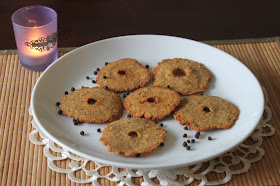This is not a recipe post. At least, for the most part. This is mostly a post on what is clarified butter (better known as ghee in India). To Indians, ghee is one of the most basic ingredients in our kitchen. We have never stopped to think twice about it. However, like most other people living outside of India, I have rediscovered and delved much more deeply into my own roots, traditions, and culture only in the midst of a foreign country surrounded by eager and curious non-Indians. Their thoughtful and simple questions always take me by surprise and make me pause as I dig into my brain to find a logical answer for their "why" "what" and "how" questions. I have learned so much more about where I come from, thanks to those questions.
In that same vein, I remember nine years ago (wow nine years!) some of my newly formed American friends asking me incredulously, "Gee? what did you just say? Sorry, I don't understand what it is". And I giggled. It was my turn to be incredulous. I thought they didn't understand my accent. So I spelled it out for them. G H E E. The stuff that comes from butter, that we use in our.... and I trailed off. I couldn't say "our food". And that's when it struck it me for the first time. There's so much about who I am that's alien to these people. As the immigration papers indicated, I truly was an alien in their midst!
Coming back to ghee, I had no idea how to explain it. It's melted butter, I began to say. But it's not just melted butter, I told myself. Thanks to google, I brought up wikipedia to form words to my thoughts. But in these nine years, so many things have changed in the West. People have become more aware and familiar with different cuisines, including Indian cuisine and culture. The concept of clarified butter is no longer that alien. Still, every time I bring it up, people continue to be fascinated and curious.
I know there are tonnes of videos and posts online on how to prepare clarified butter, clearly expounding on its properties, uses, etc, so I am not trying to educate the world with this post that's going to be tucked and buried in a far-flung corner of the internet. This is just something I felt like writing, both for the sake of completeness within this space, and for myself.

































